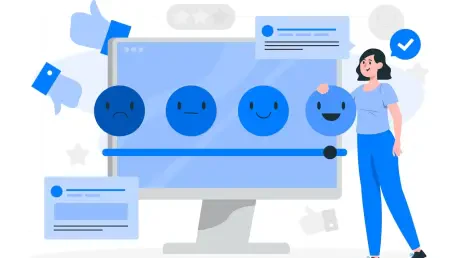In our fast-paced digital era, customer experience (CX) has become paramount. To provide insights into this evolving landscape, we have Zainab Hussain with us, an accomplished e-commerce strategist known for her expertise in customer engagement and operations management. Zainab’s journey through the intricacies of the digital world offers valuable lessons on managing customer relations, especially when faced with challenges inherent to tech-based businesses.
Can you explain what you mean by “everything is digital” in today’s world?
The phrase “everything is digital” reflects how deeply technology has integrated into our daily lives. While it might sound exaggerated, the reality is that many services we rely on exist solely online, like Uber or Vrbo, making the physical aspect of transactions largely invisible. This shift shows how pervasive digital services have become and how they’ve changed the way we interact and transact in the marketplace.
How do brands like Uber, Rover, and Vrbo operate entirely online?
Brands like Uber, Rover, and Vrbo function as digital intermediaries. They connect users with needs—like transportation or lodging—to providers offering those services, all through online platforms. They thrive on seamless user interfaces and algorithms that streamline these connections without the companies themselves providing the end service directly.
Why is it important for companies to focus on customer experience (CX) when dealing with glitches?
Companies need to focus intensely on CX during glitches because these moments test their customer relationships. Technology failures are inevitable, but how a company responds can significantly impact customer loyalty and satisfaction. A strong recovery strategy can turn a negative experience into a positive one, showing customers their needs are prioritized even amid setbacks.
Can you describe your recent experience with an online-only organization?
Recently, I encountered a hiccup with a marketplace app that acted as an intermediary between me and a seller. The glitch was annoying but understandable as a digital hiccup. However, the real issue was the customer service experience in resolving it—it was inadequate and frustrating, which overshadowed the simplicity of the initial problem.
What kind of glitches are common in companies that primarily operate through code?
Common glitches in code-dependent companies often involve transaction errors, app crashes, or communication breakdowns between buyer and seller functionalities. These issues arise from the complexities of maintaining seamless operations in continually evolving digital systems.
Why are glitches in code-based companies inevitable?
Glitches are inevitable in these companies because technology is imperfect. Updates, integrations, and changes in consumer usage patterns can all cause unexpected disruptions. Despite rigorous testing, no system can be entirely foolproof, especially as it scales.
How do you believe companies should handle these inevitable glitches to maintain good customer relations?
To manage these glitches, companies should prioritize transparent communication and efficient, empathetic customer service. Having well-trained agents ready to address issues promptly and providing clear resolutions or alternatives can help maintain trust and reduce customer frustration.
Can you elaborate on the customer service issues you faced, such as the IVR system and agent empowerment?
The IVR system I encountered was convoluted, adding to the frustration by keeping me on hold. When I did reach an agent, they seemed unempowered to make decisions or offer real solutions, resulting in a cumbersome and unsatisfying experience. Empowering agents to make decisions and offering streamlined processes could improve this significantly.
What made the policy you encountered feel far from customer-centric?
The policy seemed rigid and lacked flexibility. It felt like there was no room for understanding customer-specific situations or providing solutions that took individual circumstances into account. This disconnect made the experience feel impersonal and frustrating.
How do strong recovery systems benefit a company in terms of customer perception?
Strong recovery systems demonstrate a company’s commitment to customer satisfaction. By effectively addressing problems, companies can enhance their reputation, turning initially negative impressions into positive word-of-mouth and reinforcing customer loyalty, sometimes even leading to higher satisfaction than if no issue had occurred.
In your opinion, how should companies invest in their recovery systems?
Companies should invest in training their customer service teams with not just technical skills but also empathy and problem-solving abilities. They should provide tools and authority to resolve issues on the spot, along with robust feedback systems to continually refine their processes.
Why do you think horrible customer experience (CX) is avoidable even if glitches aren’t?
Horrible CX is avoidable because it’s within the company’s control to manage how they respond to glitches. While technical errors might be inescapable, how an organization communicates, handles customer emotions, and resolves issues is entirely manageable and crucial for maintaining satisfaction and trust.
How did the response to your issue affect your perception of the company?
The response diminished my perception of the company more than the glitch itself. The poor handling left me feeling undervalued as a customer and wary of future interactions. It pointed to a larger issue with their customer engagement philosophy and operational policies.
What could the company have done differently to enhance your experience during the glitch?
The company could have streamlined their contact process with fewer IVR hurdles and empowered their agents to resolve issues swiftly. Timely and clear communication about the problem and a more flexible policy regarding refunds or credits would have shown greater customer care.
Have you had similar experiences with other online platforms, and how were they handled?
Yes, I’ve had similar experiences where platforms handled issues quite differently. Some companies offered immediate solutions or compensatory gestures, which helped mend the relationship. It often boiled down to how empowered their customer service teams were and the effectiveness of their response protocols.
Do you have any advice for our readers?
My advice would be to focus on fostering a customer-centric culture. While technology is at the heart of many businesses, it’s how you connect and communicate with the human element of your user base that truly defines success. Investing in a robust and empathetic customer service framework can turn challenges into opportunities for deeper customer loyalty.









